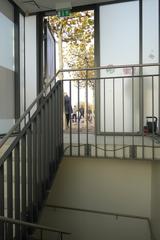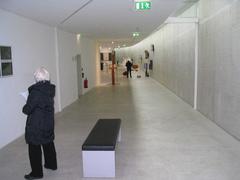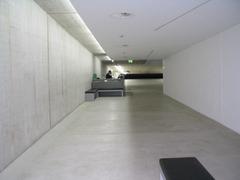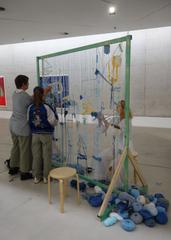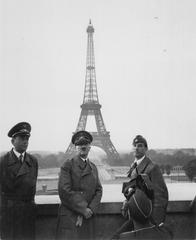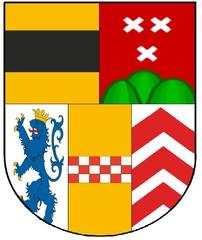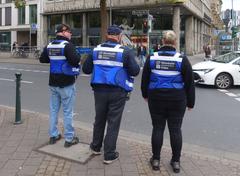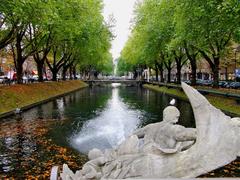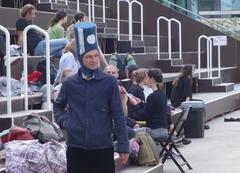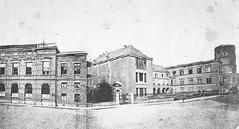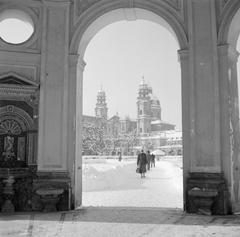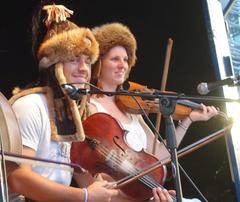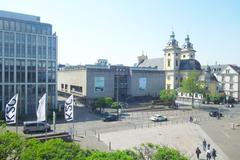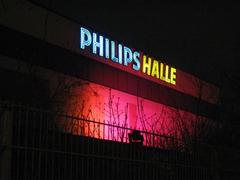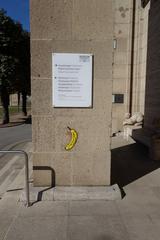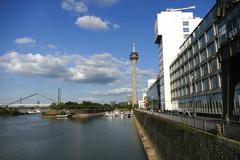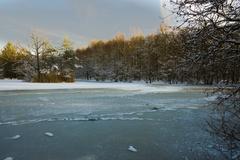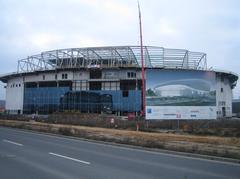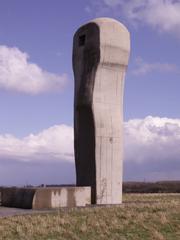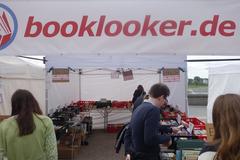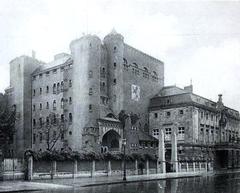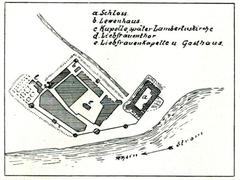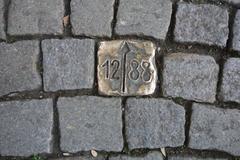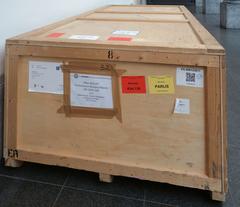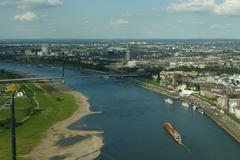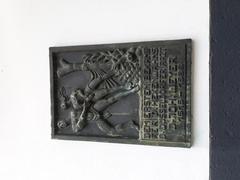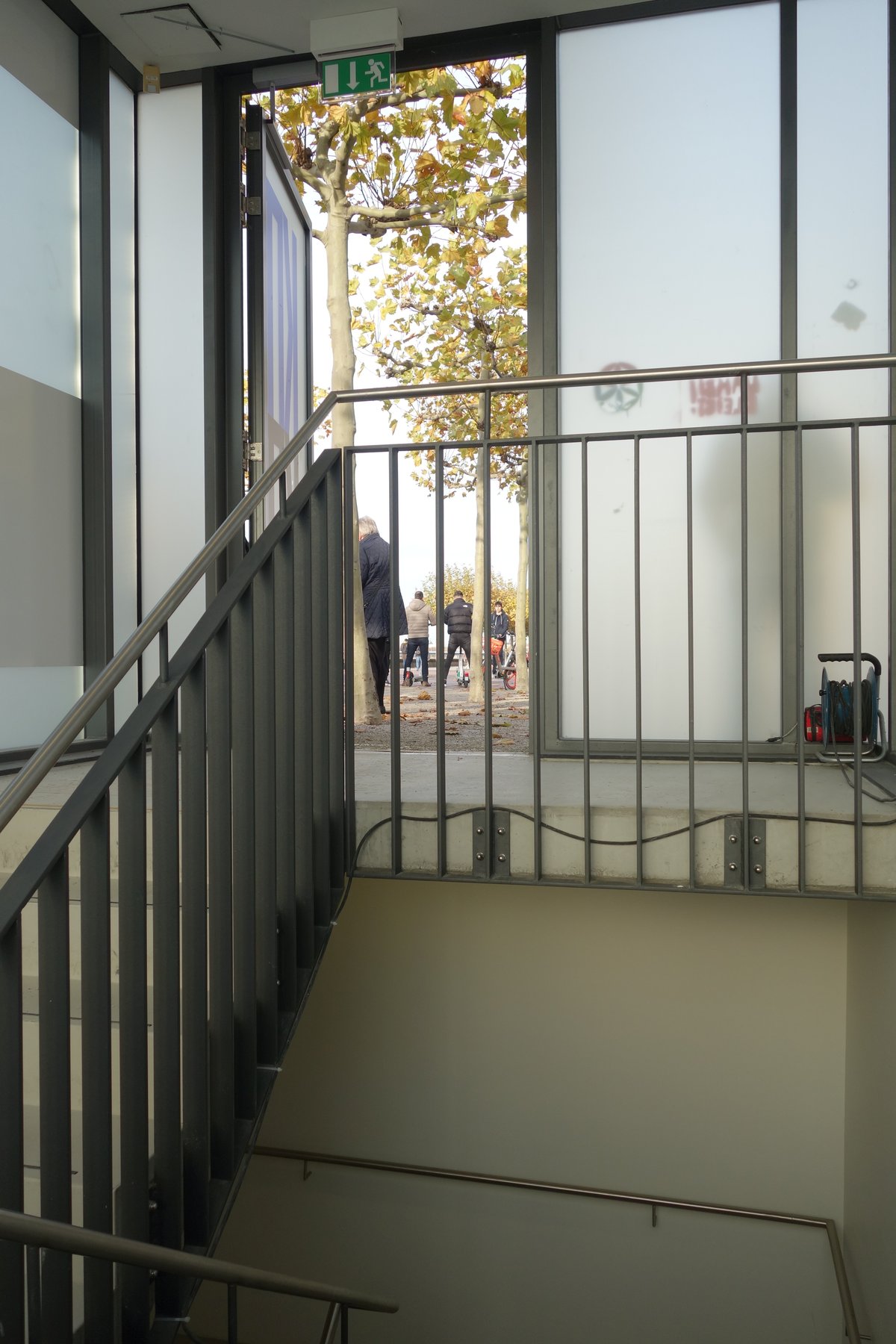
Visiting Kunst im Tunnel: Hours, Tickets, and Tips
Date: 24/07/2024
Introduction
Nestled beneath the vibrant streets of Düsseldorf, Kunst im Tunnel (KIT) offers a truly unique and immersive art experience. This underground art gallery, located along the scenic Rhine Promenade, has become an essential part of the city’s cultural and artistic landscape. Originally constructed as a railway tunnel and later repurposed as an air-raid shelter during World War II, the space lay dormant for decades before being transformed into a dynamic venue for contemporary art in the late 1990s. Today, KIT stands as a testament to Düsseldorf’s commitment to fostering a vibrant art scene, showcasing a diverse range of contemporary art forms including installations, sculptures, sound art, and video projections (Kunst im Tunnel).
The tunnel’s raw, industrial aesthetic, characterized by its arched ceilings and exposed concrete walls, provides a compelling backdrop for artistic expression. This blend of historical significance and modern creativity attracts both local and international artists, making it a must-visit destination for art enthusiasts and history buffs alike (Travel Coolers). Whether you are drawn to the innovative exhibitions, the unique architectural space, or the rich history encapsulated within its walls, Kunst im Tunnel offers an unparalleled cultural experience in the heart of Düsseldorf.
Table of Contents
- Introduction
- History of Kunst im Tunnel
- KIT’s Role in Düsseldorf’s Art Scene
- KIT’s Evolution and Future Plans
- Navigating the KIT Experience
- Unique Location Beneath the City
- Artistic Diversity at KIT
- KIT’s Significance in Düsseldorf’s Cultural Landscape
- Visitor Information
- Travel Tips and Nearby Attractions
- Special Events and Guided Tours
- Photographic Spots
- FAQ Section
- Conclusion
History of Kunst im Tunnel
Origins and Early History
The tunnel that now houses Kunst im Tunnel (KIT) has a rich and intriguing history. Originally constructed as a railway tunnel in the late 19th century, it was part of Düsseldorf’s expanding infrastructure. However, over time, the tunnel fell into disuse and was eventually abandoned. This period of dormancy lasted for several decades, during which the tunnel remained a silent reminder of a bygone era.
Wartime Transformation
During World War II, the tunnel was repurposed as an air-raid shelter. This transformation was part of a broader effort to protect the city’s inhabitants from aerial bombings. The tunnel’s robust construction and underground location made it an ideal refuge during the war. After the war, the tunnel lay dormant once again, a relic of a tumultuous period in history.
Visionary Project in the 1980s
In the 1980s, the city of Düsseldorf embarked on a visionary project to transform the former bunker into a unique art space. Recognizing the tunnel’s potential as a cultural hub, the city commissioned a group of architects and artists to reimagine the space. The result was a remarkable transformation that preserved the tunnel’s raw, industrial aesthetic while redesigning its interior to accommodate contemporary art installations.
Establishment of Kunst im Tunnel
The story of Kunst im Tunnel (KIT) began in 1997 when a group of passionate art enthusiasts envisioned a unique platform for showcasing cutting-edge contemporary art. Their search for a suitable location led them to the abandoned tunnel, a relic of Düsseldorf’s wartime past. With its raw, industrial aesthetic and evocative atmosphere, the tunnel seemed like the perfect canvas for their artistic vision. Thus, Kunst im Tunnel was born, a gallery unlike any other.
Transformation into an Art Gallery
The transformation of the tunnel into an art gallery was a collaborative effort involving architects, artists, and cultural activists. The tunnel’s raw, industrial aesthetic was carefully preserved, while its interior was redesigned to accommodate contemporary art installations. The architects ingeniously incorporated the tunnel’s original features, such as the arched ceiling and exposed concrete walls, into the new design, creating a captivating backdrop for artistic expression.
KIT’s Role in Düsseldorf’s Art Scene
Since its establishment, KIT has become a symbol of Düsseldorf’s vibrant art scene, attracting local and international artists to showcase their works in this unique setting. The gallery’s focus on contemporary art reflects the city’s dynamic cultural landscape, showcasing a diverse range of artistic mediums, from installations and sculptures to sound art and video projections. KIT’s unique location and innovative programming have made it a must-visit destination for art lovers from around the world.
KIT’s Evolution and Future Plans
KIT is constantly evolving and looking towards the future. With a dynamic team of curators and staff, KIT has ambitious plans to expand its reach and impact. Upcoming exhibitions will explore new themes and showcase cutting-edge contemporary art from around the world. Collaborations with other art institutions and organizations are on the horizon, promising exciting cross-disciplinary projects and events.
Navigating the KIT Experience
Visiting Kunst im Tunnel (KIT) is an enriching and accessible experience for art enthusiasts of all ages. The tunnel is open from Tuesday to Sunday with extended hours on Thursdays. Admission is free, allowing everyone the opportunity to immerse themselves in contemporary art. Guided tours are available for groups and can be booked in advance. The tunnel is wheelchair accessible, ensuring that everyone can fully engage with the exhibitions.
Unique Location Beneath the City
The KIT – Kunst im Tunnel is not just any ordinary art museum; it is an underground art experience like no other. Located beneath the bustling streets of Düsseldorf, this unique venue offers a captivating journey into the world of art and creativity. The tunnel, once a functional part of the city’s infrastructure, has been transformed into a vibrant and dynamic art space. Its industrial heritage adds a distinctive character to the exhibitions, creating an immersive atmosphere that enhances the artworks on display.
Artistic Diversity at KIT
KIT’s exhibitions are constantly evolving, offering a fresh and dynamic experience for visitors. The gallery collaborates with established artists, emerging talents, and international collectives to present a diverse range of artistic perspectives. From thought-provoking installations that explore social issues to interactive displays that invite visitors to participate, KIT’s exhibitions are guaranteed to leave a lasting impression.
KIT’s Significance in Düsseldorf’s Cultural Landscape
Düsseldorf’s international reputation as an art hub is cemented by its central location in the Rhineland region, which boasts a rich history of artistic patronage and cultural exchange. KIT plays a vital role in upholding this reputation by attracting renowned artists from around the world and presenting cutting-edge contemporary art that resonates with a global audience.
Visitor Information
Location: Mannesmannufer 1b, 40213 Düsseldorf
Opening Hours: Tuesday to Sunday, 11 am to 6 pm, including public holidays. Extended hours on Thursdays.
Tickets: Admission is EUR 4, with concessions available for EUR 3. Group visits (from 10 people on) are also EUR 3. Severely disabled visitors and their accompanying persons, as well as children and teens under 18, enjoy free admission. Every second Sunday of the month is Family Day, with free admission for all.
Accessibility: The tunnel is wheelchair accessible, ensuring that everyone can fully engage with the exhibitions.
Guided Tours: Available for groups and can be booked in advance.
Travel Tips and Nearby Attractions
- Travel Tips: Public transportation options are available to reach KIT easily. Consider using the tram or bus services, which have stops near the gallery.
- Nearby Attractions: While visiting KIT, explore other cultural sites nearby such as the Kunstsammlung Nordrhein-Westfalen, the Rheinuferpromenade, and the historic Altstadt (Old Town) of Düsseldorf.
Special Events and Guided Tours
KIT hosts a variety of special events and guided tours throughout the year. These events often include artist talks, workshops, and interactive sessions that provide deeper insights into the exhibitions. Keep an eye on their official website for the latest updates and event schedules.
Photographic Spots
The unique underground setting of KIT offers numerous photographic spots. The raw, industrial aesthetic and striking art installations provide a perfect backdrop for photography enthusiasts. Capture the essence of this one-of-a-kind gallery and share your experience with others.
FAQ Section
Q: What are the visiting hours for Kunst im Tunnel? A: KIT is open from Tuesday to Sunday, 11 am to 6 pm, with extended hours on Thursdays.
Q: How much are tickets for Kunst im Tunnel? A: Admission is EUR 4, with concessions available for EUR 3. Group visits (from 10 people on) are also EUR 3. Severely disabled visitors and their accompanying persons, as well as children and teens under 18, enjoy free admission. Every second Sunday of the month is Family Day, with free admission for all.
Q: Is Kunst im Tunnel accessible for wheelchair users? A: Yes, the tunnel is wheelchair accessible, ensuring that everyone can fully engage with the exhibitions.
Q: Are guided tours available at Kunst im Tunnel? A: Yes, guided tours are available for groups and can be booked in advance.
Conclusion
By preserving its historical roots while embracing contemporary art, Kunst im Tunnel offers a unique and immersive experience that bridges the past and present. Whether you’re an art enthusiast, history buff, or simply looking for a unique experience in Düsseldorf, KIT is a must-visit destination. Plan your visit today and immerse yourself in the captivating world of contemporary art beneath the streets of this vibrant German city (Kunst im Tunnel).
References
- Kunst im Tunnel. (n.d.). Über KIT - KIT Geschichte. Retrieved from Kunst im Tunnel
- Travel Coolers. (2024). Unusual Things to Do in Düsseldorf, Germany. Retrieved from Travel Coolers
- Artpil. (n.d.). KIT - Kunst im Tunnel. Retrieved from Artpil
